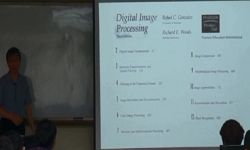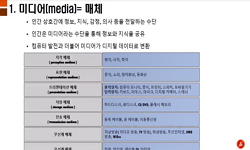The aim of image enhancement is to or to provide ‘better’ input for other improve the interpretability or perception of information in images for human viewing automated image processing techniques. Various Histogram Equalization techniques like...
http://chineseinput.net/에서 pinyin(병음)방식으로 중국어를 변환할 수 있습니다.
변환된 중국어를 복사하여 사용하시면 됩니다.
- 中文 을 입력하시려면 zhongwen을 입력하시고 space를누르시면됩니다.
- 北京 을 입력하시려면 beijing을 입력하시고 space를 누르시면 됩니다.
https://www.riss.kr/link?id=A100237512
- 저자
- 발행기관
- 학술지명
- 권호사항
-
발행연도
2014
-
작성언어
English
- 주제어
-
자료형태
학술저널
-
수록면
71-78(8쪽)
- 제공처
-
중단사유
※ eArticle의 서비스 중단으로 원문이 제공되지 않습니다.
-
0
상세조회 -
0
다운로드
부가정보
다국어 초록 (Multilingual Abstract)
The aim of image enhancement is to or to provide ‘better’ input for other improve the interpretability or perception of information in images for human viewing automated image processing techniques. Various Histogram Equalization techniques like CHE, GHE, BBHE, DSIHE, RMSHE and Multi-HE techniques are used for processing the image input to enhance its output. This paper provides a review over the modification of the brightness preserving dynamic histogram equalization technique to improve its brightness preserving and contrast enhancement abilities while reducing its computational complexity. There are many modified technique related to brightness preserving dynamic Histogram Equalization that uses statistics of digital images for their representation and processing are discussed here. Representation and processing of images in the spatial domain enables the technique to handle the inexactness of gray level values in a better way, resulting in improved performance. This algorithm enhances image contrast as well as preserves the brightness very effectively. Some images are not available to good quality, so these algorithms are used for image enhancement to improve the quality of the image.
목차 (Table of Contents)
- Abstract
- 1. Introduction
- 2. Image Enhancement by Histogram Equalization
- 3. Extension to Histogram Equalization
- 4. Brightness Preserving Techniques Application in Image Enhancement
- Abstract
- 1. Introduction
- 2. Image Enhancement by Histogram Equalization
- 3. Extension to Histogram Equalization
- 4. Brightness Preserving Techniques Application in Image Enhancement
- 5. Fuzzy Statistics in Image Enhancement
- 6. Image Enhancement Application in Real Time
- References
동일학술지(권/호) 다른 논문
-
- 보안공학연구지원센터
- Jinwei Wang,Xirong Ma,Jizhou Sun,Ziping Zhao,Yuanping Zhu
- 2014
-
Remote Sensing Image Fusion Based On IHS and Dual Tree Compactly Supported Shearlet Transform
- 보안공학연구지원센터
- Chang Duan,Qihong Huang,Xuegang Wang,Shuai Wang,Hong Wang
- 2014
-
- 보안공학연구지원센터
- Han Dong Ping,Bao Di
- 2014
-
A Novel Image Interpolation Algorithm Based on Directional Extension of AP-DCT Interpolation Kernel
- 보안공학연구지원센터
- Zhonglin Ding,Li Li
- 2014




 eArticle
eArticle





